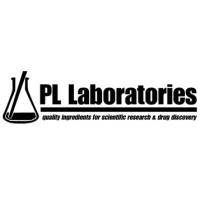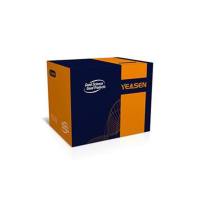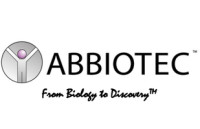NF-kappaB信号通路(10张)
互联网
3819
相关专题
NF-kappaB signaling pathway
how the ubiquitination system regulates the activation of IKK-NF-κB signaling pathway
NF-kappaB signaling pathway
NF-kappaB signaling pathway
NFKB_mechanism_of_action
Proposed mechanisms of NF-κB activation in HIV-1–infected Cell s:Several mechanisms may regulate NF-κB activity in HIV-1–infected cells. Binding of HIV-1 to CD4 leads to NF-κB activation via Lck/Raf and PI-3K/Akt. CD4 crosslinking induces Ras activation, which also leads to NF-κB activation. PKR, induced by low level IFN and HIV-1 transcripts, may induce IKK activation. Autocrine release of cytokines such as TNF-α and IL-1 may constitutively stimulate the signaling pathways leading to NF-κB activation. Activation of the IKK complex either directly by HIV-1 regulatory proteins or by cytokine release leads to the phosphorylation and degradation of IκBα and IκBβ, thus releasing NF-κB to translocate to the nucleus and transactivate responsive genes. Newly synthesized IκBβ enters the nucleus and prevents IκBα-mediated termination of the NF-κB response, thus maintaining constitutive NF-κB activity at the protein-DNA level and creating an intracellular environment conducive to viral replication.
Signaling Pathways Leading to Activation of NF-κB
The activation of NF-κB:The activation of NF-κB. Cell signaling pathways induced by growth factors, chemotherapy, or radiotherapy result in the phosphorylation and proteasomal degradation of IκB. The transcription factor NF-κB is thereby released and promotes the expression of cytokines, cell adhesion molecules, and antiapoptotic proteins.
The NF-κB signal transduction pathway in development and dysfunction of the immune system:Activation of NF-κB by the alternative (left) and the classical pathway (right). Signaling through TNFR, IL-1R, or Toll-like receptors (TLR) activates the classical NF-κB pathway involving predominantly the β and γ subunits of the IKK complex. Nuclear translocation and DNA-binding of p50-RelA heterodimers is accomplished through IκBα phosphorylation and ubiquitin-dependent proteasomal degradation. Membrane-bound LTα1β2, CD40, and BAFF, on the other hand, activate via their respective receptors the kinases NIK and IKKα. Phosphorylation of p100 results in the processing of the precursor to the p52 subunit and nuclear accumulation of p52-RelB heterodimers. There is significant cross talk since signaling through the LTβR, for instance, also results in the induction of RelA complexes. It is believed that the two pathways activate distinct sets of genes.
NF-kappaB signaling pathway
how the ubiquitination system regulates the activation of IKK-NF-κB signaling pathway
NF-kappaB signaling pathway
NF-kappaB signaling pathway
NFKB_mechanism_of_action
Proposed mechanisms of NF-κB activation in HIV-1–infected Cell s:Several mechanisms may regulate NF-κB activity in HIV-1–infected cells. Binding of HIV-1 to CD4 leads to NF-κB activation via Lck/Raf and PI-3K/Akt. CD4 crosslinking induces Ras activation, which also leads to NF-κB activation. PKR, induced by low level IFN and HIV-1 transcripts, may induce IKK activation. Autocrine release of cytokines such as TNF-α and IL-1 may constitutively stimulate the signaling pathways leading to NF-κB activation. Activation of the IKK complex either directly by HIV-1 regulatory proteins or by cytokine release leads to the phosphorylation and degradation of IκBα and IκBβ, thus releasing NF-κB to translocate to the nucleus and transactivate responsive genes. Newly synthesized IκBβ enters the nucleus and prevents IκBα-mediated termination of the NF-κB response, thus maintaining constitutive NF-κB activity at the protein-DNA level and creating an intracellular environment conducive to viral replication.
Signaling Pathways Leading to Activation of NF-κB
The activation of NF-κB:The activation of NF-κB. Cell signaling pathways induced by growth factors, chemotherapy, or radiotherapy result in the phosphorylation and proteasomal degradation of IκB. The transcription factor NF-κB is thereby released and promotes the expression of cytokines, cell adhesion molecules, and antiapoptotic proteins.
The NF-κB signal transduction pathway in development and dysfunction of the immune system:Activation of NF-κB by the alternative (left) and the classical pathway (right). Signaling through TNFR, IL-1R, or Toll-like receptors (TLR) activates the classical NF-κB pathway involving predominantly the β and γ subunits of the IKK complex. Nuclear translocation and DNA-binding of p50-RelA heterodimers is accomplished through IκBα phosphorylation and ubiquitin-dependent proteasomal degradation. Membrane-bound LTα1β2, CD40, and BAFF, on the other hand, activate via their respective receptors the kinases NIK and IKKα. Phosphorylation of p100 results in the processing of the precursor to the p52 subunit and nuclear accumulation of p52-RelB heterodimers. There is significant cross talk since signaling through the LTβR, for instance, also results in the induction of RelA complexes. It is believed that the two pathways activate distinct sets of genes.
NF-kappaB signaling pathway










